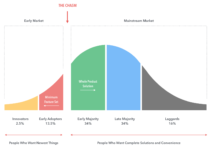If the technical term “nonfungible token” was selected to describe how the art market meets FinTech as a way of catching attention, then it has succeeded mightily. It begs the inevitable questions: What the heck is that? Why would anyone buy that? The New York Times took that approach in its 03/12/2021 story on the largest sale of digital-asset token as art: “What Are NFTs, Anyway? One Just Sold for $69 Million.”
The story covers a record-breaking price obtained by 255-year old Christie’s Auction House for a digital collage by Beeple. Ownership and the artwork’s uniqueness are guaranteed by a cryptographic record on, yes, a digital ledger that uses, yes, blockchain technology. Usage of NFTs has increased dramatically this year, as reported by The Block.
To this point, the intersection of digital assets with the art market to this point has focused on digital tokens that enable fractional ownership of art. Buyers can invest in tokens that represent a small portion of the current market value of a piece of art. You can make a small investment in an expensive piece of art, just as you can buy a fraction of a share in a public company through investment platforms.
NFTs, however, are the digital opposite. As The Wall Street Journal put it in its NFT explainer article: “Proponents say they are a way to make digital assets scarce, and therefore more valuable.”
Are they? The Canright family’s view on alternative medicine provides an apt analogy. We try alternative treatments, many of which may be called placebos by traditional medical practitioners. If they work, we don’t care whether it’s our perception or biological reality.
The art market, like some alternative investments, is driven by the perception: beauty, exclusivity, scarcity, vanity. If people believe it’s valuable, then it is. Whether it holds value over time, well, that’s the bet a collector makes. Tabb Forum gives an art collector’s viewpoint. As for the economic-legal term “fungible,” you can read about it here.


